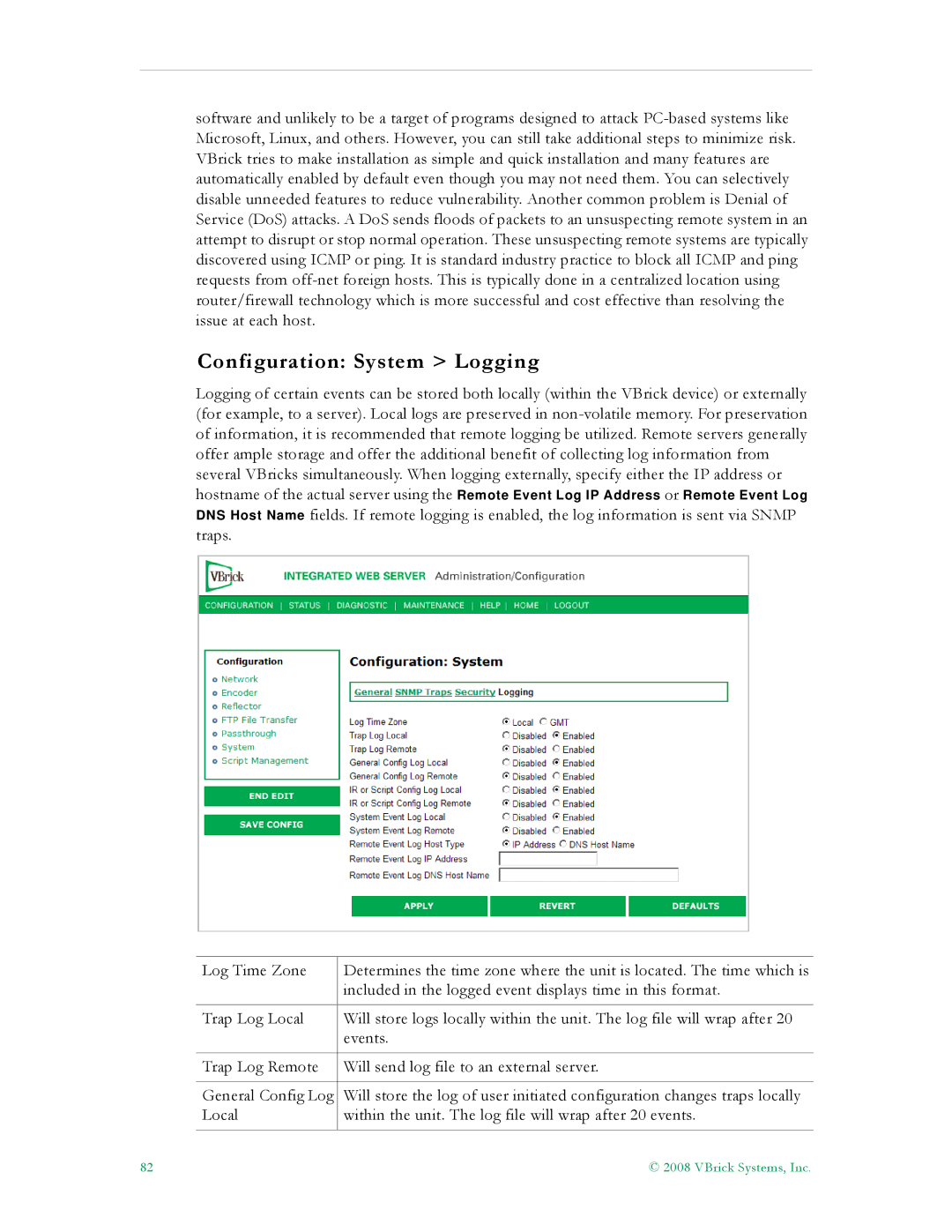
© 2008 VBrick Systems, Inc.
General Config Log Local
Will store the log of user initiated configuration changes traps locally within the unit. The log file will wrap after 20 events.
Trap Log Remote
Will send log file to an external server.
Trap Log Local
Will store logs locally within the unit. The log file will wrap after 20 events.
Log Time Zone
Determines the time zone where the unit is located. The time which is included in the logged event displays time in this format.
software and unlikely to be a target of programs designed to attack PC-based systems like Microsoft, Linux, and others. However, you can still take additional steps to minimize risk. VBrick tries to make installation as simple and quick installation and many features are automatically enabled by default even though you may not need them. You can selectively disable unneeded features to reduce vulnerability. Another common problem is Denial of Service (DoS) attacks. A DoS sends floods of packets to an unsuspecting remote system in an attempt to disrupt or stop normal operation. These unsuspecting remote systems are typically discovered using ICMP or ping. It is standard industry practice to block all ICMP and ping requests from off-net foreign hosts. This is typically done in a centralized location using router/firewall technology which is more successful and cost effective than resolving the issue at each host.
Configuration: System > Logging
Logging of certain events can be stored both locally (within the VBrick device) or externally (for example, to a server). Local logs are preserved in non-volatile memory. For preservation of information, it is recommended that remote logging be utilized. Remote servers generally offer ample storage and offer the additional benefit of collecting log information from several VBricks simultaneously. When logging externally, specify either the IP address or
hostname of the actual server using the Remote Event Log IP Address or Remote Event Log
DNS Host Name fields. If remote logging is enabled, the log information is sent via SNMP traps.
82
